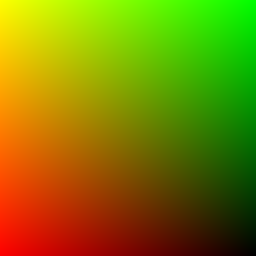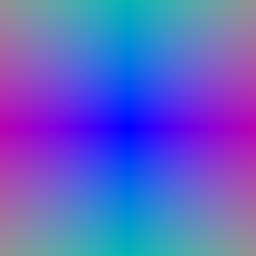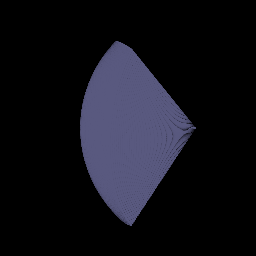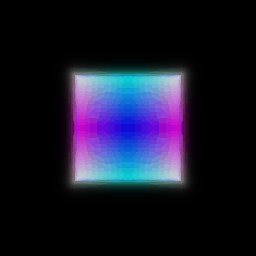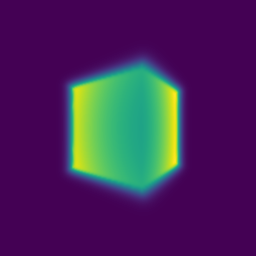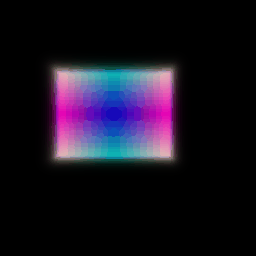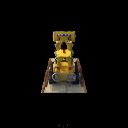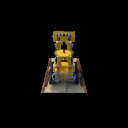Command: python main.py --config-name=box
Command: python main.py --config-name=train_box
Box center: (0.2502, 0.2506, -0.0005)
Box side lengths: (2.0051, 1.5036, 1.5034)
Command: python main.py --config-name=nerf_lego_no_view
Rendering WITH positional encoding and WITHOUT view dependence:
Command: python main.py --config-name=nerf_lego
Rendering WITH positional encoding and WITH view dependence:
Comments:
-
With view-dependency added fine-grained detail and lighting effects are rendered much better. For instance, the shadows on the base of the bulldozer and the shine on the blade of the bulldozer when facing the light source are more apparent.
-
Spurious flicker in the rendering is also reduced with view-dependency.
-
Viewpoint conditioning is added after density estimation i.e. much later in the network because: a) it only affects the color component and b) exposing the whole network to view encoding may lead to over fitting.
-
NeRF allows for arbitrary lighting and is rather too flexible. Without enforcing a physically-informed lighting model, NeRF can tend to have low generalization power i.e. it can perform poorly when cameras are imprecise and viewpoints are sparse. However, given dense set of precise views adding viewpoint dependence helps improve rendering quality.
Command: python main.py --config-name=nerf_lego_med_highres
Command: python main.py --config-name=nerf_lego_highres
 |
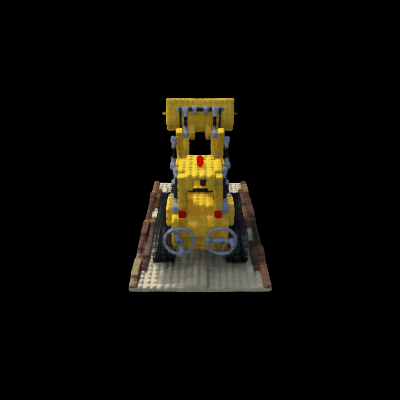 |
|---|---|
| low-capacity network | high-capacity network |
Comments:
In general:
- Higher fine-grained details ( for instance the lego base or the grey grill-like structure on the front of the bulldozer and the shaft joints) are visible with high-res rendering. The effect of viewpoint conditioning is also much more apparent on the lego base and on the blade of the bulldozer where you can see shadows.
- However, it takes a significant increase in the network capacity (depth, number of hidden dimensions, position and view dependence encoding to achieve a higher representational power. This means, while NeRF allows for rendering arbitrarily resolutions, it comes at the cost of high computation power.
I experimented with two configuration:
High resolution (400 x 400) with low network capacity:
batch_size: 1024
image_size: [400, 400]
chunk_size: 32768
n_harmonic_functions_xyz: 8
n_harmonic_functions_dir: 3
n_hidden_neurons_xyz: 128
n_hidden_neurons_dir: 64
n_layers_xyz: 7
append_xyz: [3]
High resolution (400 x 400) with high network capacity:
batch_size: 512
chunk_size: 8192
n_harmonic_functions_xyz: 10
n_harmonic_functions_dir: 4
n_hidden_neurons_xyz: 256
n_hidden_neurons_dir: 128
n_layers_xyz: 8
append_xyz: [4]
As expected, the rendering with a higher network capacity has a sharper rendering. The smaller network also results in more spurious rendering which reflects as flickering in the rendering (can be seen on a closer look).
But what I find worth-noting is the fact that the network parameters had to increase more than 4 times in number for what doesn't seem like a lot of improvement visually. This again points towards how the computation requirement for training can scale significantly even for small improvements in rendering quality.
